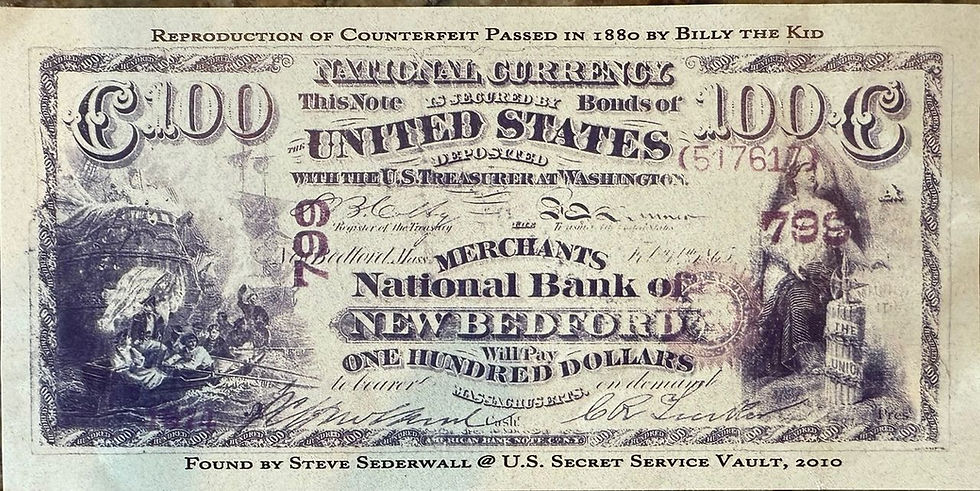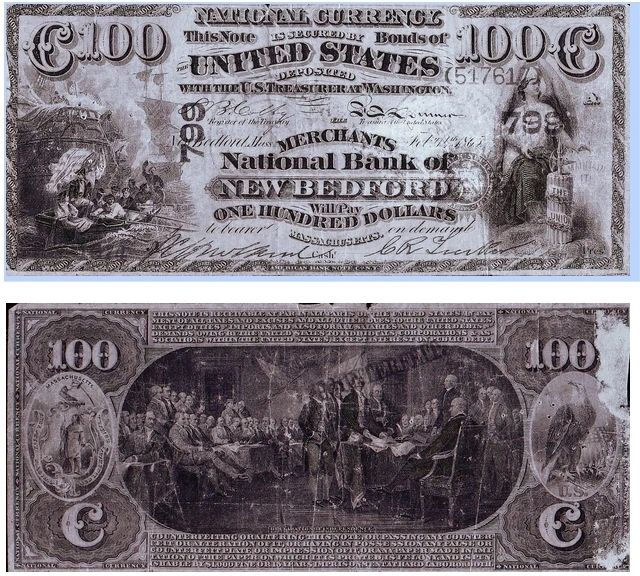The Big House
- jeremiahslatten
- Jan 8, 2023
- 3 min read

In the late fall of 1873, construction began on what would eventually be considered the most iconic historic building of the Old West. The “House of Murphy,” as it soon became known, was created from stone and over 58,000 feet of lumber. Legend has it that it was built with the forced labor of individuals that found themselves indebted to Lawrence G. Murphy. Like all good stories, this one has a twist.
Considering that Murphy wasn’t above the use of what could be considered nothing short of slave labor to erect his store, it’s not surprising that he would kill for it as well. The Maes brothers lived on the land that Murphy wanted for his store. With some trumped-up charges of horse theft, Murphy had the brothers picked up to be transported to Fort Stanton. Just two miles east of Lincoln, directly off what is now Highway 380, both brothers were hung by the sheriff of Lincoln County. The murder of the brothers was quickly swept under the rug and remained hidden from history until Cold West Detective Steve Sederwall uncovered the secret while searching property records. The stump of the tree that hung the Maes brothers can still be seen just off the roadway.
With construction complete, the grand opening was on June 4, 1874. Housed under its roof were the mercantile store and post office on the bottom floor. A billiard hall occupied the room to the west of the store. Drinks were passed through a porthole, for there was no doorway. The second floor initially provided living quarters for L.G. Murphy and his business associates. Jimmy Dolan occupied the room across the hall from his boss and mentor. It was said that Murphy enjoyed sitting on the balcony overlooking the town that bent to his will.
The House supplied all of Lincoln County with the necessities of life. Prices were inflated, with the intent of keeping customers in debt to the proprietor, who had the monopoly in Lincoln County - including beef contracts with nearby Fort Stanton. It would appear that little could stop Murphy, as he had the backing of one of the most prominent political machines in the territory, the Santa Fe Ring.
However, when Murphy's health began to dwindle, he stepped out of the spotlight, selling his interest in the company to James Dolan and Co. But, with his business ventures collapsing under the weight of the Lincoln County War, Dolan eventually was forced to mortgage the building and its contents to political giant Thomas Catron. Catron would oversee the operations for a short time, until selling to Will Dowlin and Co. Will Dowlin and John C. DeLaney then ran a general mercantile store out of the building until that enterprise also went bankrupt, and they were forced to sell the property to Lincoln County for $15,000.

The building next served both the city and county as a courthouse and jail. During this time, the courthouse underwent multiple renovations. Murphy's old room was transformed into a sheriff's office and living quarters. And only three weeks after the building was purchased by the county, it hosted its most famous prisoner. William H. Bonney, alias “Billy the Kid,” was delivered to Sheriff Pat Garrett for safekeeping until the Kid’s scheduled execution date of May 13, 1881.
Billy, despite being guarded around the clock by two deputies, made his escape on April 28, 1881. In doing so, he left two dead deputies in his violent wake. The killing of Deputy Bell stained the stairs of the courthouse with his blood. Blood that would resurface 123 years later, echoing the violence that occurred within the building’s walls.
The property continued to serve as the courthouse up until 1913, when the county seat was moved from Lincoln to Carrizozo. In 1914, the building became the Lincoln High School and remained as such until the school was relocated to Capitan in 1931. With that move, the old courthouse stood vacant for the first time since its construction.
In 1937, the building was deeded to the State of New Mexico, and its restoration began. Jerome W. Hendron headed up the project and stated that: “In repairing the building, it was our intention to restore it as nearly as possible to the time when Billy the Kid made his escape in 1881.” The courthouse was dedicated as a museum in July of 1939. One of its many curators was well-known Billy the Kid historian and author, Col.Maurice Garland Fulton. Fulton lived at the courthouse with his dozen or so cats while writing his book, The History of the Lincoln County War.
Today, the building's foundation is cracking in various spots, a progression being worsened due to vibrations caused by large commercial vehicles traveling through town. The courthouse museum is listed both on the National Register of Historic Places and the New Mexico State Register of Cultural Properties.




Comments